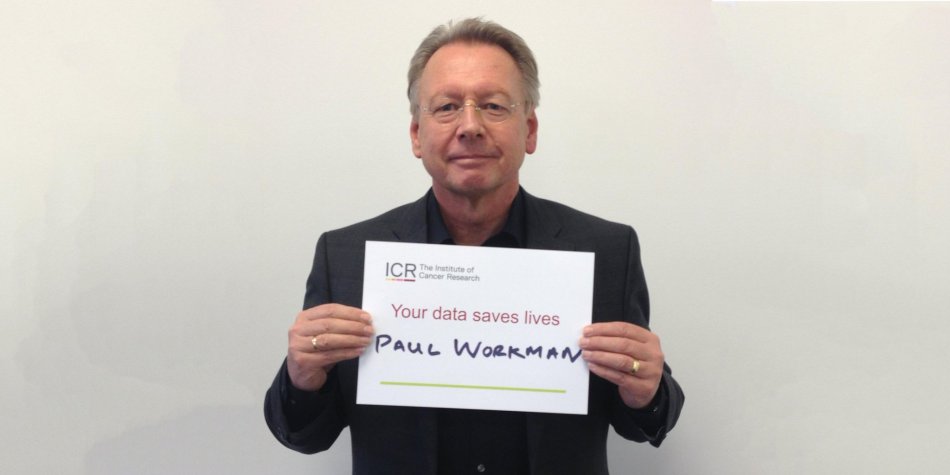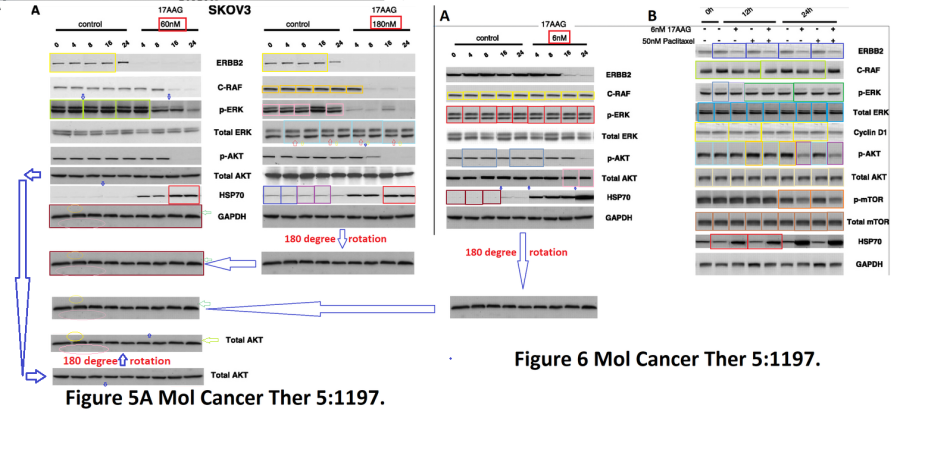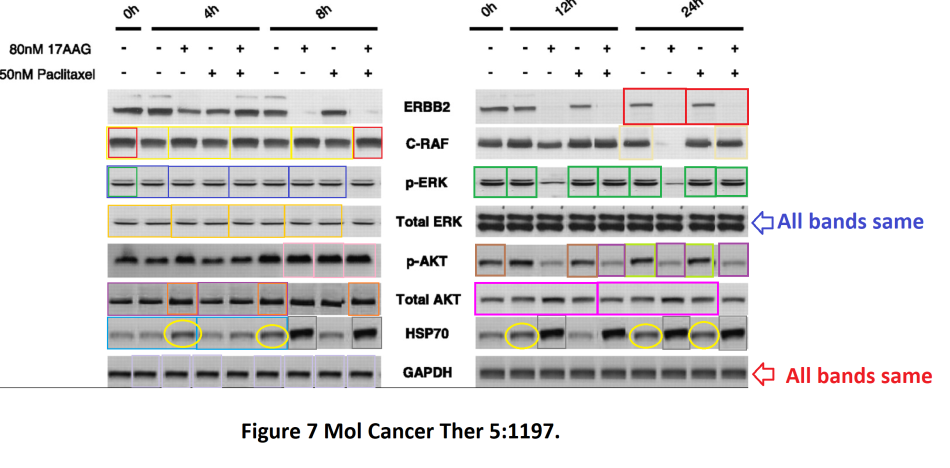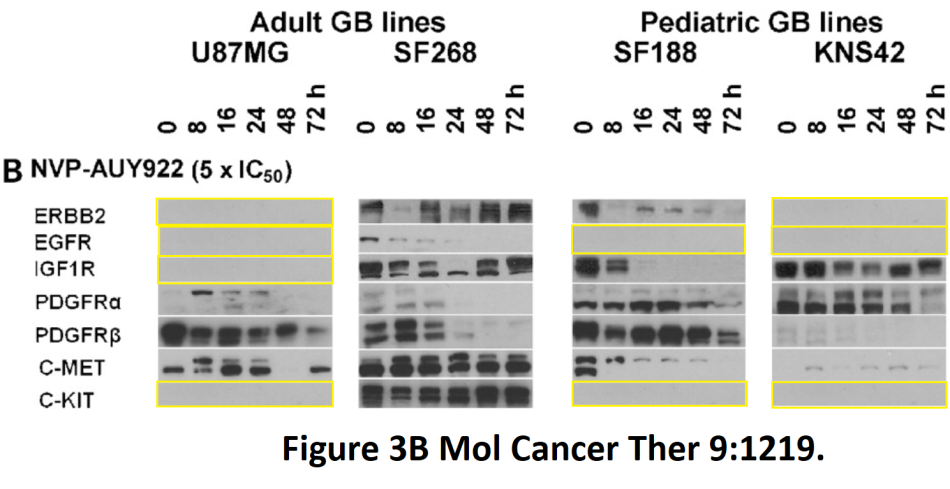Before biology became digital, with its -omics and big data, there were mostly gels and microscopy images. The peak of image use in biomedical papers was reached at the turn of the century, those became the golden times of Photoshop-assisted data manipulation. Not many suspected that scientists would sit at their computers digitally cloning gel bands inside gel images, stitching seemingly continuous figure panels from various, often unrelated gels, erasing image background and fragments which might have spoiled the narrative, or reusing old published pictures as new results. Many of the authors of such manipulated papers are meanwhile professors and directors of institutes, some also act as academic editors of scholarly journals. Nothing can touch them now, all they have to do when fingers are pointed on internet, is to sit it out until the evidence of misconduct turns into entertaining anecdotes of their wild youth.
These Millennial years, which became the Golden Age of Biological Imaging is why PubPeer is overflowing with evidence of grossly manipulated data from the period around late 1990ies till around 2010. It is not that scientists became more honest since, but they sure became more difficult to catch on data rigging. For one reason, gross image reuse or manipulation is rare these days, after the warning stories of research misconduct became widely known. Scientists probably returned to manipulating data the old way, by tweaking the experimental conditions or rigging samples in the lab. You can’t get caught on that until a colleague blows a whistle, and Academia has its long-honed ways of swiftly dealing with such despicable rat-finks. The other reason why evidence of data manipulation will soon become rare, is digitalisation of biological analytic technologies. As long as noone can force you to release your original gene expression analyses, microscopy files, code or spreadsheet quantifications, it is all up to your ingenuity. After all, your data is just a row of numbers, no IT or Photoshop skills needed there.
To celebrate the past Golden Age of Biological Imaging, I selected an example of the British cancer researcher Paul Workman, President and CEO of the huge Institute of Cancer Research (ICR) in Sutton, which is in greater London and part of the University of London. Workman, a Fellow of the Royal Society of Chemistry, received many awards and much funding thanks to his work on the heatshock protein 90 (HSP90), which his papers reliably validated as a druggable cancer target. Prof Workman is about to cure cancer, and indeed, his preclinical research on HSP90 has moved into clinical trials.

Now look at these figures from Workman lab, in the papers Banerji et al, Cancer Chemotherapy and Pharmacology, 2008 and Sain et al, Molecular Cancer Therapeutics 2006, both dealing with the anti-cancer activity of HSP90 inhibitor 17-allylamino-17-demethoxygeldanamycin. So many bands look suspiciously similar that you just stand in disbelief and do not know where to look first. The bands were apparently not just cloned inside same gel image, but also across different figures in two different papers. Why did the authors do that? Is it because the experiments didn’t work out as they expected, and needed to be nudged a tiny bit into the right direction? Or was it to save time, because their genius scientific minds knew exactly which result to expect, and this is why these scientists will easily reproduce it 10 or 12 years later, should the journals ask for a correction?
![image-1516053142932[1]](https://forbetterscience.com/wp-content/uploads/2018/01/image-15160531429321.png?w=950)
The Sain et al 2006 paper is indeed a piece of work, do visit the corresponding PubPeer page. Workman is its penultimate author, which means his lab was key collaborator. The last author on Sain et al 2006 is Ann Jackman, now emeritus professor at ICR, she is in turn penultimate author on the, well, “related” Banerji et al 2008 paper. This for example, is the Figure 6 from Sain et al 2006. No more mere band duplications indeed. It appears like the entire gel for C-RAF or p-ERK or AKT or mTOR shows the same band cloned 9 times in a row.

Similar case with Figure 7. Here, the PubPeer sleuth gave up labelling cloned bands and simply wrote for ERK and GAPDH blots “All bands same“. Those are, as above, loading controls, so it is to be expected that a friendly journal editor will dismiss them as irrelevant. Yet the loading control is probably the most important part of an analytic gel, without it all “main” results become pointless (read more here). Even if those other bands were not cloned also, which in this Workman paper, they very much excessively look like.

Did noone really notice anything? Maybe this poor overworked man Workman was just unlucky with those two papers, and 2006-2008 was a difficult, crazy time for him? Well, here is a paper from 2010, again on HSP90 inhibitors: Gaspar et al, Molecular Cancer Therapeutics 2010.

The journal Molecular Cancer Therapeutics is published by AACR, the American Association for Cancer Research. It is the biggest and the most important cancer society in the world. Also the journal Clinical Cancer Research is published by AACR, and here Workman placed a collaborative paper Pacey et al 2011 which last author is Ian Judson, meanwhile retired ICR professor. The paper is also about HSP90 inhibitor, and again it scientifically proves that pharmacological HSP90 inhibition causes western blot gel band duplication.

There is even more on PubPeer. Workman built a spectacular academic and clinical career on HSP90 inhibitors, which now entered clinical trials because of his very convincing laboratory research shown above. The ICR President’s example shows how quickly basic cell biology research in the lab with its western blots and microscopy, can lead to actual clinical trials with hundreds of patients. Here are Workman’s own words from 2014:
“An example of an innovative approach to tackle resistance is the discovery and development of Hsp90 inhibitors – a totally new type of drug that we, and only a few other research centres worldwide, have pioneered. These inhibitors have the exciting ability to target several different cancer molecular weaknesses at once, and so can overcome or even prevent drug resistance.
It took costly, high-risk research to develop Hsp90 inhibitors and they have progressed from being a poorly appreciated drug target to one of the most actively pursued in the drug industry today. Leading Hsp90 inhibitors have shown very encouraging results in trials of patients with HER2-positive breast cancers that have become resistant to trastuzumab and patients with non-small cell lung cancer who have become resistant to the widely used molecular targeted drugs erlotinib and crizotinib.
It would be very disappointing if this sort of innovation is not rewarded when it comes to deciding if the NHS will pay so that patients can benefit”.
Maybe his burning desire to save cancer patients and convince NHS to pay for the HSP90 inhibitor therapies was what caused such a corner-cutting hurry in Workman’s lab? Should drugs enter clinical trials based on “creatively” produced laboratory data? What if the trial participants, who are desperate cancer patients hoping for a cure, knew how the published preclinical data was really obtained?
Now, aside of journals, whom should one complain to about all this? To ICR and its director Workman, with the request for him to investigate his own papers? That would be interesting. To Cancer Research UK which funds ICR? Maybe not such a good idea, they saw no problem giving charity money to one of most notorious zombie scientists around, Silvana Bulfone Paus.
The bizarre collage works of Workman can be used as teaching material for the excesses of the Millennial years, the Golden Age of Biological Imaging. Because Workman’s published legacy is a piece of work indeed.
Update 4.02.2018. There is an interesting side story how “Clare Francis” came to scrutinise Workman’s literature on heatshock protein inhibitors and alert me to his PubPeer-posted findings. As the pseudonymous sleuth explained:
“The funny bit is that I only looked at Paul Workman’s “work” on HSP90 proteins and cancer after discovering the fakes on HSP60 by Irun Cohen on diabetes! If HSP60 attempts at inhibiting HSP60 did not work it was unlikely that attempts at inhibiting HSP90 would work on another disease. See: https://forbetterscience.com/2017/11/27/how-irun-cohen-and-weizmann-institute-almost-cured-diabetes/”

Donate!
If you are interested to support my work, you can leave here a small tip of $5. Or several of small tips, just increase the amount as you like (2x=€10; 5x=€25). Your generous patronage of my journalism will be most appreciated!
€5.00


There are also papers with problematic data by the previous CEO of the Institute of Cancer Research, Alan Ashworth, now at UCSF. http://cancer.ucsf.edu/people/profiles/ashworth_alan
” Prior to joining UCSF in January 2015, he served as Chief Executive of the Institute of Cancer Research (ICR) and the Director of the Breakthrough Breast Cancer Research Centre in London, United Kingdom. ”
Some may be simple mistakes, others are more involved.
https://pubpeer.com/publications/22A0D80CF891EEFEB7C23332484780
https://pubpeer.com/publications/CECD3E767BD0AFA9DDB1BA919F663F
https://pubpeer.com/publications/261D475F6640FC59C9A867EC7F5DD2
https://pubpeer.com/publications/40975CCD671ACC13843AC53551942C
https://pubpeer.com/publications/67F39E13B7C8B51E8F8F34D70AFF84
https://pubpeer.com/publications/509134CE1EE1E6A1C7DEA161CB77CB
https://pubpeer.com/publications/C2570E46E89E6746B01CF962D728A8
LikeLike
“The journal Molecular Cancer Therapeutics is published by AACR, the American Association for Cancer Research. It is the biggest and the most important cancer society in the world. Also the journal Clinical Cancer Research is published by AACR, and here Workman placed a collaborative paper Pacey et al 2011 which last author is Ian Judson, meanwhile retired ICR professor.”
According to the journal Molecular Cancer Therapeutics, Paul Workman is one of the two deputy editors
http://mct.aacrjournals.org/site/misc/edboard.xhtml
“Paul Workman
Cancer drug discovery and development; new therapeutic targets; molecular pharmacology; biomarkers; chemical biology and chemical probes.”
There will be a conflict on interest in dealing with the problematic data in 2 papers Paul Workman has published in that journal.
https://pubpeer.com/publications/6571C7894B94AF53DFFCE2D07A92AC
https://pubpeer.com/publications/B9F5526DAA022A24160FFC842D6936
There will also be a conflict of interest in dealing with 2 papers in the journal Cancer Research a sister AACR journal.
https://pubpeer.com/publications/C6FC87A48D3FA4FBE14988F4C7DA6C
https://pubpeer.com/publications/2D08D69E0DA4FD23B55600C9AD42C7
and in a Clin Cancer Research (another AACR journal) paper.
https://pubpeer.com/publications/17381EA586BFAFC02333E53938442F
LikeLike
Mol Cancer Ther. 2006 May;5(5):1197-208.
Potentiation of paclitaxel activity by the HSP90 inhibitor 17-allylamino-17-demethoxygeldanamycin in human ovarian carcinoma cell lines with high levels of activated AKT.
Sain N1, Krishnan B, Ormerod MG, De Rienzo A, Liu WM, Kaye SB, Workman P, Jackman AL.
Author information
The Haddow Laboratories, The Institute of Cancer Research, 15 Cotswold Road, Sutton, Surrey SM2 5NG, United Kingdom.
Same GAPDH loading control used for 3 different experiments.
Figures 5 and 6. See: https://imgur.com/E8s4aL3
LikeLike
Clin Cancer Res. 2005 Oct 1;11(19 Pt 1):7023-32.
Pharmacokinetic-pharmacodynamic relationships for the heat shock protein 90 molecular chaperone inhibitor 17-allylamino, 17-demethoxygeldanamycin in human ovarian cancer xenograft models.
Banerji U1, Walton M, Raynaud F, Grimshaw R, Kelland L, Valenti M, Judson I, Workman P.
Author information
Cancer Research UK Centre for Cancer Therapeutics, The Institute of Cancer Research, Haddow Laboratories, Sutton, United Kingdom.
Figure 6B. The right 2 lanes (Paclitaxel and carboplatin treatments) of the c-RAF-1 panel do not look like they come from the same blot as the right 2 lanes of the other panels. c-RAF-1 and HSP70 have very similar molecular weights. The vertical slips in the bands most clearly seen in the LCK panel are not apparent in the CDK4 or GAPDH panels.
Figure 6B. https://imgur.com/hi1JMef
LikeLike
Pingback: Boletim de Notícias: O prejuízo de R$ 2,3 bi com o Aedes e o Ruralômetro do Congresso | Direto da Ciência
The examples on Pubpeer are staggeringly bad and well past the point of pure arrogance. These people should not have degrees let alone jobs, and to have them in positions of influence is a mockery of scientific aspiration. I had no idea Britain had sunk to the level of a backward nation. At least they still can make a mean nature documentary.
LikeLike
Britain didn’t sink, it has always been down there.
LikeLike
Back to
Mol Cancer Ther. 2006 May;5(5):1197-208.
Potentiation of paclitaxel activity by the HSP90 inhibitor 17-allylamino-17-demethoxygeldanamycin in human ovarian carcinoma cell lines with high levels of activated AKT.
Sain N1, Krishnan B, Ormerod MG, De Rienzo A, Liu WM, Kaye SB, Workman P, Jackman AL.
Author information
The Haddow Laboratories, The Institute of Cancer Research, 15 Cotswold Road, Sutton, Surrey SM2 5NG, United Kingdom.
There is an embarrassment of riches.
LikeLike
https://www.amazon.co.uk/Embarrassment-Riches-Interpretation-Culture-Golden/dp/0006861369
LikeLike
Reflects the title of the article, and suggests the question: has the Institute for Cancer Research become bloated on riches not deserved?
LikeLike
These frankengels are really impressive and probably some of the best examples in the genre. I enjoyed going over them over a few coffees. Thanks! It’s too bad that now it’ll be harder to catch, er… ‘performers of excesses’ and it’ll be like my field, where you can make up numbers, and everyone is too busy to check your demanding experiment anyways. But, there is also less money and prestige in my field, so I still believe (perhaps naively) that we’re cleaner.
LikeLike
the Marsden has a culture of protecting its good old boys. fraud there is the norm, and favours for those who go to the best schools too
LikeLike
I have heard echoes of that, but how to quantify?
LikeLike
Now with Erler (former ICR) scandal also rolling out:
https://retractionwatch.com/2018/03/22/figures-in-cancer-paper-at-root-of-newly-failed-compound-called-into-question/
LikeLike
Can we believe in anything that is publish in high impact journals nowadays?
LikeLike
Yes. But there must be zero tolerance towards fraud, also there is similar or more fraud in other journals.
LikeLike
Pingback: Flawed cytometry of Rector Giorgio Zauli – For Better Science
J Biol Chem. 2003 May 2;278(18):16059-72. Epub 2003 Feb 17.
The histone deacetylase 9 gene encodes multiple protein isoforms.
Kevin Petrie‡, Fabien Guidez‡, Louise Howell‡, Lyn Healy‡, Samuel Waxman§, Mel Greaves‡ and Arthur Zelent‡¶
Author Affiliations
From the ‡Leukemia Research Fund Centre at the Institute of Cancer Research, London SW3 6JB, United Kingdom and the §Department of Medicine, Mount Sinai Medical Centre, New York, New York 10029.
PMID: 12590135 DOI: 10.1074/jbc.M212935200
Figure 6B.
Figure 9.
LikeLike
Mol Cell Biol. 2005 Jul;25(13):5552-66.
Histone acetyltransferase activity of p300 is required for transcriptional repression by the promyelocytic leukemia zinc finger protein.
Guidez F1, Howell L, Isalan M, Cebrat M, Alani RM, Ivins S, Hormaeche I, McConnell MJ, Pierce S, Cole PA, Licht J, Zelent A.
Author information
Fabien Guidez 1,†, Louise Howell 1, Mark Isalan 2, Marek Cebrat 3,4, Rhoda M. Alan i5, Sarah Ivins 1, Itsaso Hormaeche 6, Melanie J. McConnell 6, Sarah Pierce 1, Philip A. Cole 3, Jonathan Licht 6 and Arthur Zelent 1,*
Author Affiliations
1Section of Haemato-Oncology, Institute of Cancer Research, Chester Beatty Laboratories, 237 Fulham Road, London SW3 6JB, United Kingdom
2EMBL Heidelberg, Meyerhofstrasse 1, D-69117 Heidelberg, Germany
3Department of Pharmacology and Molecular Sciences, Johns Hopkins University School of Medicine, Baltimore, Maryland 21205
4Faculty of Chemistry, University of Wroclaw, 50-383 Wroclaw, Poland
5Sidney Kimmel Comprehensive Cancer Center, Johns Hopkins University School of Medicine, Baltimore, Maryland 21205
6Division of Hematology/Oncology, Department of Medicine, Mount Sinai School of Medicine, New York, New York 10029.
Figure 3D. https://imgur.com/2aJ0w4w
Figure 6A. https://imgur.com/1WDvX4x
LikeLike
Figure 3D.
Figure 6A.
LikeLike
http://www.rsc.org/ScienceAndTechnology/Awards/Sosnovsky/2010Winner.asp
“Professor Workman’s interdisciplinary research team has been responsible for, or associated with, several innovative new drugs entering the clinic and has identified fourteen development candidates over the last five years. These include the HSP90 molecular chaperone inhibitor NVP-AUY922 and the PI3 kinase inhibitor GDC-0941.”
Most of the papers with image manipulation are about HSP90 inhibitors.
You’d think that the Royal Society of Chemistry would look before it leaps.
LikeLike
This happened after the story came out.
https://www.icr.ac.uk/news-archive/cancer-researchers-visit-the-palace-to-receive-major-prize-for-pioneering-precision-medicine-discoveries
LikeLike
Prince Charles is famous for liking all things “organic”, how the field was ploughed, how the seed was sown, the processes by which the manure was made, so why doesn’t His Royal Highness ask Paul Workman to see his primary data on HSP90 inhibitors?
LikeLike
https://www.icr.ac.uk/news-archive/broadcaster-victoria-derbyshire-and-former-cancer-research-uk-ceo-sir-harpal-kumar-awarded-honorary-doctorates
ICR is very media savvy, especially by cleaving a BBC Broadcaster to its bosom.
why doesn’t Victoria Derbyshire ask to see Paul Workman’s primary data on HSP90 inhibitors?
LikeLike
Why is ICR awarding Sir Harpal Kumar an honorary doctorate?
“Sir Harpal has a long list of achievements spanning his career in cancer research institutes” is a euphemism. Is not the same thing as doing science in cancer institutes. He has only ever been an administrator.
LikeLike
Because he has been feeding them money for years and helped cover up many scandals including sexual harassment, scientific misconduct, illegal dismissals, corrupted financial handlings etc. There is evidence for all of this.
LikeLike